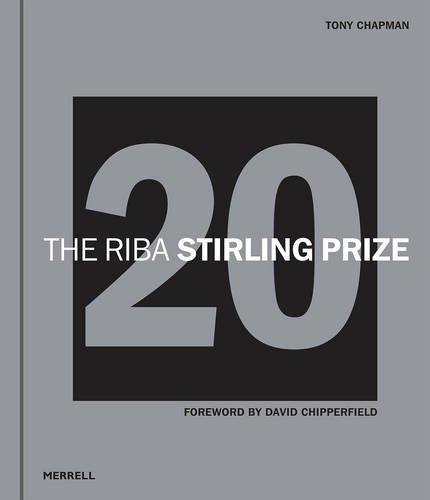Post
BOOK REVIEW | The RIBA Stirling Prize 20
7 Nov 2016
The RIBA Stirling Prize: 20
by Tony Chapman
Review by Chris Panfil
For dozens of recommended London Books, check out the London Society Book Service in association with John Sandoe Bookshop
Tony Chapman’s “The RIBA Stirling Prize 20” is a beautifully and comprehensively illustrated book showcasing the winning and the shortlisted projects of this prestigious architecture award from its inception in 1996 until 2015. The introduction gives an overview of the history of the award and why it was named in honour of the architect Sir James Stirling – who apparently hated the RIBA. The rest of the introduction text is at times amusing, but at others opaque, with inside jokes and in-house references that most readers won’t be able to follow.
The main body of the book contains a useful summary list of the winners from 1996 to 2005, but unfortunately, a similar list is missing from the book for the period 2006 to 2015. That’s a particular shame, as such a snap-shot would efficiently illustrate the changing juries’ success in adhering to the selection criteria for the award. This was first set out by the RIBA as “not a question of style or appearance, it’s how you organise spaces and movement from a place and an activity; it’s nothing to do with appearance.” These words were first written by the late Sir James and are implicitly or explicitly accepted by most members of the western architectural establishment, at least since the dawn of post-modern times. However, the rich variety of architectural expression exhibited in the diversity of the winning projects suggest that “style” is a significant contributing component to the award. The winning projects over the years represent either the audacious design style and architectural virtuosity of practices such as Zaha Hadid, Alsop & Störmer, or Future Systems. Alternatively, it is the restrained style and ordered manner of a proto-modernism exhibited by such winners as Feilden Clegg Bradley Studios or David Chipperfield that succeeds in securing the award.
For London readers, of note is the frequency with which the capital is represented as the location of either the winning projects (7 out of 20); the shortlisted projects; or as the home of the winning architecture practice. The London winners range from the Media Centre at Lord’s Cricket Ground by Future Systems (1999), still a beacon of great design 17 years after winning the award. Alsop & Störmer’s Peckham Library (2000), on the other hand, has arguably fared less well. In addition to the Evelyn Grace Academy (2011) by Zaha Hadid, there is one of this reviewer’s favourites: the Laban Centre, Creekside in Deptford (2003) by Herzog and De Meuron, the now famous architects who transformed the Bankside power station into Tate Modern. Foster and Partners’ 30 St Mary Axe (aka “the Gherkin”) won in 2004, the first tall urban building to secure the prize and arguably the first to start London’s pursuit of “iconic” tall towers. Hopefully, the failure of Renzo Piano’s Shard to win in 2014 will not exclude the building from consideration in a future year.
The book’s greatest success is to illustrate how the winning schemes have helped elevate public discussion about the importance of quality in architecture. In the words of Tony Chapman: to help “convince a pathologically sceptical public that architecture is, or should be or can be a good thing.”

